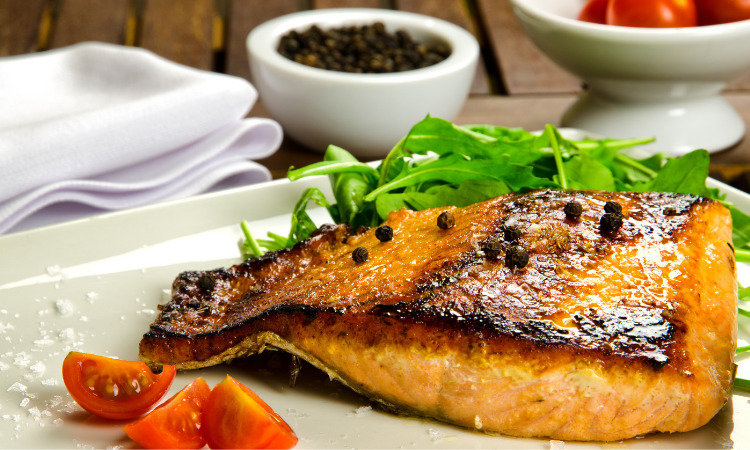The Eyes Have It

Do you consider your eye health to be a component of your physical health? We all work hard to maintain our physical health in peak condition. At least once a year, you should schedule routine consultations with your optometrist to ensure that your glasses are the right strength for your vision and that their frames are current. However, keeping good eye health goes beyond wearing glasses.
Diet is a significant underlying component that promotes healthy eye aging. Particular nutrients are necessary for the health and function of the eyes. You may remember hearing as a child to eat your carrots to improve your night vision. That's accurate. The fat-soluble vitamin vitamin A, which is abundant in carrots and other brightly colored orange or green vegetables as well as egg yolk and liver, is essential for the integrity of the photoreceptive cells, often known as "rods," in the retina that allow us to see in the dark. Night blindness is exceedingly uncommon because the majority of people get enough vitamin A. A family of chemicals known as beta carotenoids, including beta carotene, also includes vitamin A.
Age is the actual eyesight problem, not night blindness. After years of exposure to ultraviolet sunshine, environmental oxidative stress, diabetes, genetic factors, or smoking, our eyes may become optically impaired as we age. The most frequent causes of vision loss are cataracts, glaucoma, and age-related macular degeneration (AMD). The choices for treating AMD in adults over 65 are limited, in contrast to how easily treatable cataracts and glaucoma are.While risk factors for poor eye health are largely understood, there is growing focus to the role that nutrition plays in promoting good eye health. Vitamin C, vitamin E, zinc, copper, omega-3 fatty acids, lutein, and zeaxanthin are nutrients that have been linked to improved vision. Along with zeaxanthin, lutein is quickly becoming one of the most significant beta carotenes for maintaining good vision, particularly in the macula of the eye, where AMD occurs. The average American diet only contains 1 to 3 milligrams of lutein and zeaxanthin daily, although studies indicates that 6 milligrams are necessary to lower the risk of AMD.
Kale, spinach, collard, and turnip greens contain large levels of lutein, while corn, peas, broccoli, romaine lettuce, green beans, egg yolks, and oranges only contain small amounts. Your intake of lutein is probably healthy if you adopt a plant-based diet. For appropriate lutein intake, the American Optometric Association advises diet and/or supplementation. Because lutein is best absorbed when combined with a fat source, taking a lutein supplement together with food maximizes assimilation. If you're going to take a supplement, be sure it has 10 mg each of lutein and zeaxanthin.
According to a recent survey, baby boomers (aged 55 to 75) were unaware of the essential nutrients that support eye health. Your vision is really essential. Chat with your
 For a lutein and an omega-3 fatty acid rich meal try Baked Salmon with Wilted Spinach. Grill or bake a 4 or 5 ounce portion of salmon. Wilt 2 cups of fresh spinach by lightly sautéing spinach in a skillet with 2 teaspoons or butter or olive oil. Lightly salt and pepper salmon and spinach. Make a side salad with chopped romaine, sliced tomatoes with dressing of choice. The salmon provides omega-3 fatty acids that support healthy blood vessels by reducing inflammation. While salmon isn’t a source of lutein, it may help reduce the effects of inflammation caused by oxidative stress.
For a lutein and an omega-3 fatty acid rich meal try Baked Salmon with Wilted Spinach. Grill or bake a 4 or 5 ounce portion of salmon. Wilt 2 cups of fresh spinach by lightly sautéing spinach in a skillet with 2 teaspoons or butter or olive oil. Lightly salt and pepper salmon and spinach. Make a side salad with chopped romaine, sliced tomatoes with dressing of choice. The salmon provides omega-3 fatty acids that support healthy blood vessels by reducing inflammation. While salmon isn’t a source of lutein, it may help reduce the effects of inflammation caused by oxidative stress.
No comments:
Post a Comment
if You Have Any Doubit.Please let me know